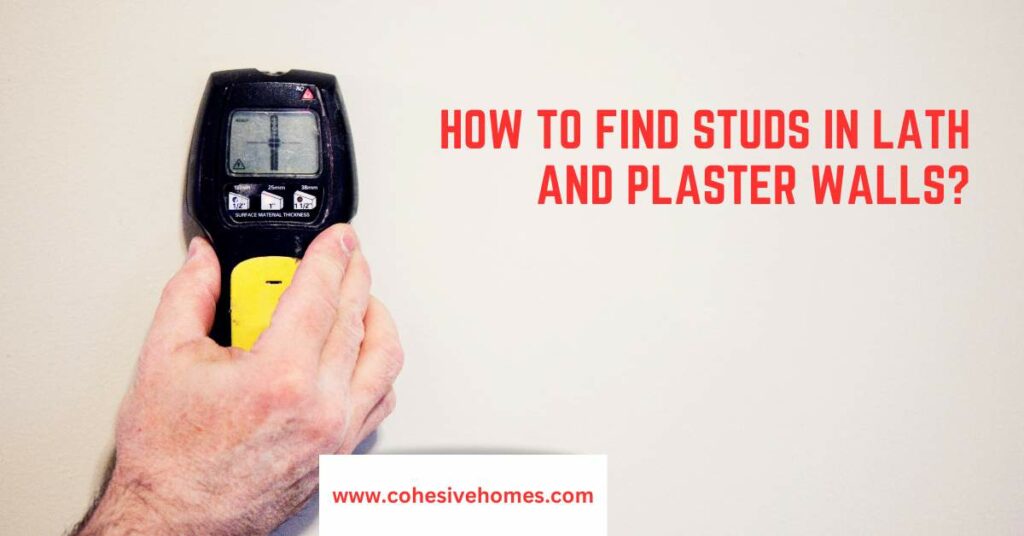
Finding studs in lath and plaster walls can be a daunting task, especially if you don’t have the right tools or techniques.
However, having the knowledge of where to locate these studs is crucial for hanging pictures, installing shelves, or even installing a new wall unit.
In this blog post, we will be discussing various methods for locating studs in lath and plaster walls, including both traditional and modern techniques.
Whether you are a DIY enthusiast or a professional carpenter, this guide will provide you with the necessary information to make your next project a success.
So, let’s dive in and learn how to find studs in lath and plaster walls.
Finding studs in lath and plaster walls can be done using traditional or modern methods, depending on the project size and wall thickness.
The Importance of Finding Studs in Lath and Plaster Walls

Older homes and buildings frequently have plaster and lath walls, but it can be difficult to locate the studs inside these walls.
Studs are vertical supports in walls that provide stability and are essential for hanging heavy objects like shelves or cabinets.
Knowing where the studs are located is crucial for ensuring that your installations are secure and safe.
Without proper support, your items could fall and cause damage or injury.
Therefore, it is important to take the time to find the studs before you start your project.
What are Lath and Plaster Walls and How Do They Differ from Other Walls?

In the late 19th and early 20th centuries, lath and plaster walls were a popular wall construction method.
They are constructed of evenly spaced-out wooden laths, which are subsequently covered in a coating of wet plaster.
The plaster hardens and creates a solid surface as it cures.
Other wall types, including drywall or plasterboard, are not built or constituted the same way as lath and plaster walls.
Drywall consists of gypsum plaster between two sheets of paper, while plasterboard has gypsum plaster between two cardboard sheets.
Finding studs in lath and plaster walls can be trickier than finding them in drywall or plasterboard walls because of the differences in composition and construction.
Although you may still find the studs inside these walls using the appropriate equipment and methods,
Traditional Methods for Locating Studs in Lath and Plaster Walls

Traditional methods for locating studs in lath and plaster walls are simple, low-tech, and often rely on common tools found around the home. Some popular traditional methods include:
- Using a Magnetic Stud Finder: A magnetic stud finder uses a strong magnet to locate the nails or screws that secure the wooden studs in place. Simply move the stud finder along the wall, and when the magnet detects a nail or screw, it will stick to the wall, indicating the location of the stud.
- Measuring and Marking: This method involves measuring the distance from the corner of the room to the first stud and then using that measurement to locate the remaining studs. Simply measure and mark every 16 or 24 inches along the wall, and you should be able to locate all of the studs.
- Knocking and Listening: Another traditional method is to simply knock on the wall and listen for a change in sound. A solid stud will produce a different sound than a hollow area, allowing you to locate the studs by sound.
While lacking the speed and precision of modern technology, traditional methods remain inexpensive and efficient for many applications.
By combining traditional methods with modern tools, you can achieve the best results for your project.
Modern Methods for Locating Studs in Lath and Plaster Walls

Modern methods for locating studs in lath and plaster walls have come a long way in recent years and now offer a range of advanced and highly accurate tools for finding studs in even the most challenging of walls.
Some of the most popular modern methods for locating studs in lath and plaster walls include
Electronic Stud Finders
Electronic Stud Finders are specialized tools that use various technologies to locate studs within walls.
Some electronic stud finders use infrared or electromagnetic sensors to detect the presence of studs, while others use advanced algorithms and imaging technologies to generate an accurate map of the wall.
Smartphone Apps
Smartphone apps that use your device’s sensors to locate studs within walls have become increasingly popular in recent years.
Certain apps use the accelerometer or magnetometer to find studs, whereas others employ advanced imaging tech for precise wall mapping.
Ultrasonic Devices
Ultrasonic devices are specialized tools that use high-frequency sound waves to locate studs within walls.
These devices send out sound waves that bounce off the wall and are reflected back to the device, allowing it to determine the presence and location of studs based on the time it takes for the sound waves to return.
X-Ray Technologies
Advanced X-ray technologies, such as thermal imaging cameras, have become increasingly popular for locating studs in lath and plaster walls.
These devices use infrared radiation to create a thermal image of the wall, which can then be analyzed to determine the presence and location of studs.
These modern methods offer a range of benefits over traditional methods, including greater accuracy, speed, and ease of use.
Whether you are a professional contractor or a DIYer, these methods provide a reliable and effective way to locate studs in lath and plaster walls.
Do Stud Finders Work on Lath and Plaster Walls?

Stud finders are devices that are designed to detect the location of studs within walls.
Electronic stud finders emit a magnetic field or use a sensor to detect changes in wall density, indicating stud location.
Stud finders work for drywall and plasterboard but may vary in effectiveness for lath and plaster walls.
The effectiveness of stud finders on lath and plaster walls depends on several factors, including the type of stud finder.
The age and condition of the walls, and the presence of any metal in the walls.
Some electronic stud finders may not be able to detect studs within lath and plaster walls because the plaster and lath can interfere with the electronic signals.
Older lath and plaster walls with metal laths or components can also disrupt electronic signals from stud finders.
Stud finders designed for lath and plaster walls can be used to locate studs inside these types of walls.
Here are a few stud finders available on Amazon that you can consider:
Franklin Sensors ProSensor 710 Precision Stud Finder
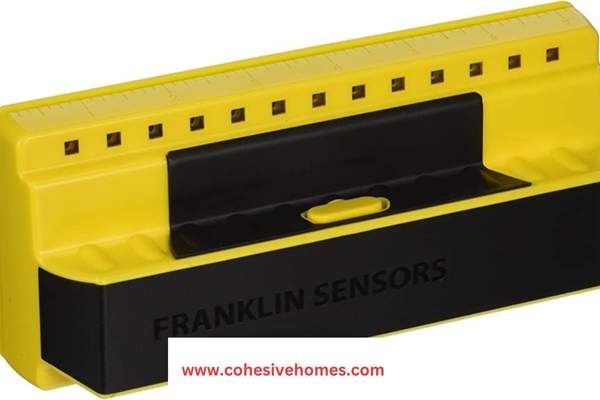
This stud finder is specifically designed for use on lath and plaster walls and is highly rated by users.
It uses multiple sensors to provide accurate results and has a large LED display that makes it easy to read.
Zircon StudSensor HD55
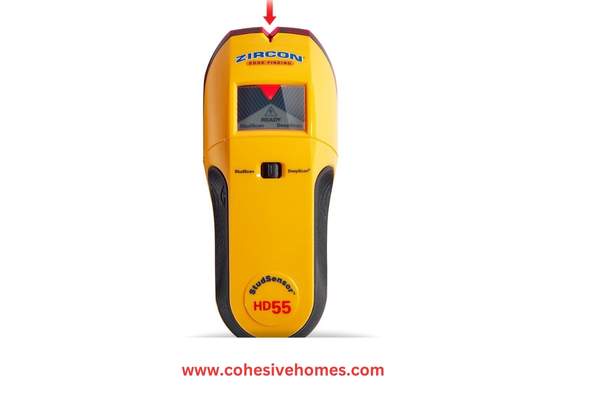
This stud finder features a deep scanning capability that allows it to locate studs even within thick walls.
It also has a user-friendly interface and a backlit display for easy reading in low-light conditions.
Using a Magnetic Stud Finder on Lath and Plaster Walls
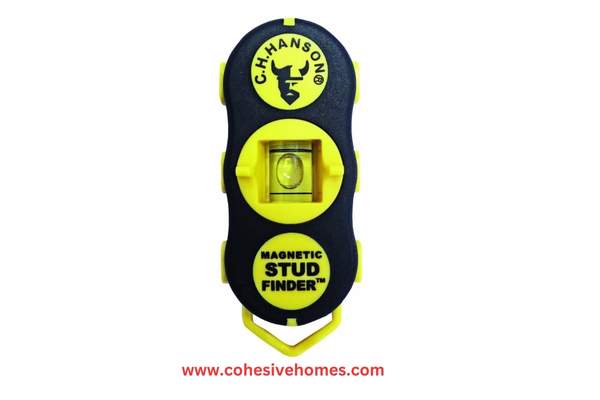
A magnet-based stud finder can detect nails or screws in the wall, indicating a possible stud location.
To use a magnetic stud finder on lath and plaster walls, you simply move the tool along the wall until it sticks to a nail or screw.
Magnetic stud finders on lath and plaster walls can work, but aren’t always reliable.
This is because the presence of nails or screws does not always indicate the presence of a stud.
Furthermore, some older lath and plaster walls may not contain any nails or screws, making it difficult to locate the studs using a magnetic stud finder.
Despite these limitations, a magnetic stud finder can be a useful tool for finding studs in lath and plaster walls.
Since they require no batteries or training, magnetic stud finders are ideal for quick, budget-friendly stud locating.
Highly rated magnetic stud finder available on Amazon:
CH Hanson 03040 Magnetic Stud Finder
This simple and effective magnetic stud finder is a popular option on Amazon.
It is small and lightweight, making it easy to carry and use, and it is highly rated by users for its accuracy and reliability.
Using a Sound Detection Stud Finder on Lath and Plaster Walls
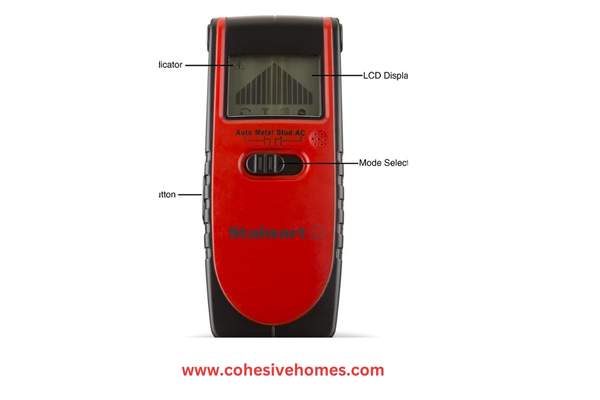
A sound detection stud finder is a tool that uses sound to locate studs within walls.
Locating a stud with this type of finder involves tapping on the wall and detecting a change in sound.
A sound detection stud finder can work on lath and plaster walls, but accuracy may require practice and time.
For this method, choose lath and plaster walls that are in good condition and free from sound-dampening substances.
If you choose to use a sound detection stud finder on lath and plaster walls, it is important to be patient and take your time.
While slower, this technique is ideal for older structures or those who prefer not to use electronic stud finders.
Highly rated sound detection stud finder available on Amazon
Stalwart 75-HT3009 Stud Finder
This sound-detection stud finder is a simple and affordable option for finding studs in lath and plaster walls.
It is compact and lightweight, making it easy to use, and it is highly rated by users for its accuracy and reliability.
Using a Metal Detector Stud Finder on Lath and Plaster Walls

The metal detector stud finder employs electromagnetic fields to detect metal objects, like screws and nails, in walls.
Manufacturers design this type of stud finder to detect both ferrous and non-ferrous metals, which makes it ideal for use on lath and plaster walls that may contain a mix of metal components.
Using a metal detector stud finder on lath and plaster walls can be an effective way to locate studs, but it is important to keep in mind that not all metal objects within the wall will indicate the presence of a stud.
Compared to other finders, metal detector stud finders may be costlier and necessitate more proficiency to be efficient.
Considering these drawbacks, a metal detector stud finder can still be an effective instrument for locating studs in lath and plaster walls, particularly for individuals who need to find metal components inside the wall.
When using this type of stud finder, it’s important to learn how to use it correctly and understand its limitations.
Highly rated metal detector stud finder available on Amazon
Zircon MetalliScanner MT6
This metal detector stud finder is a versatile and accurate tool for locating metal objects within walls.
Users praise its user-friendly design and its capability to detect various metal types, both ferrous and non-ferrous.
The Advantages and Limitations of Using Electronic Stud Finders

Electronic stud finders are popular tools for locating studs in lath and plaster walls, but like all tools, they have both advantages and limitations.
| Advantages | Limitations |
| Speed and Efficiency | Cost |
| Accuracy | Reliance on Batteries |
| Convenience | Limited Range |
| Versatility | Interference from Other Objects |
Advantages

Speed and Efficiency
Electronic stud finders are fast and efficient, allowing you to quickly and easily locate studs within walls without the need for manual methods like tapping and listening.
Accuracy
Electronic stud finders are highly accurate, providing a reliable and accurate way to locate studs in lath and plaster walls.
Convenience
Electronic stud finders are portable and easy to use, making them a convenient option for professionals and DIYers alike.
Versatility
Many electronic stud finders are designed to work on a wide range of walls and surfaces, including drywall, plaster, and lath and plaster walls, making them a versatile tool for different types of projects
Limitations
Cost
Electronic stud finders can be more expensive than other methods for locating studs and may not be within the budget of some DIYers.
Reliance on Batteries
Many electronic stud finders require batteries, and if the batteries run out during use, the tool may become less effective or stop working altogether.
Limited Range
Some electronic stud finders are designed for use on walls with a limited thickness and may not work effectively on thicker walls or in other types of structures.
Interference from Other Objects
Electronic stud finders may be affected by other objects within the wall, such as electrical wiring or plumbing, which can lead to false readings or inaccuracies.

How to Tap and Listen for Studs in Lath and Plaster Walls

An easy and affordable technique for finding studs in lath and plaster walls involves tapping on the wall with a hard tool and listening for the sound of a solid object.
This technique makes use of the fact that studs are normally made of solid wood and that lath and plaster are typically used to fill the spaces between studs.
To begin using this technique, choose a hard object to tap on the wall, like a hammer or screwdriver.
Next, lightly touch the wall a few times in different locations while listening for the sound of a solid object. You’ve probably found a stud if you hear something solid.
The stud’s placement on the wall can then be marked using a pencil or another type of marker.
It’s crucial to keep in mind that this method can be time-consuming and may include some trial and error because it can be challenging to discern between the sound of a solid object and other sounds coming from inside the wall.
But, it can be difficult to pinpoint the precise location of the stud based only on the sound, so you might need to utilize other techniques or instruments, like a stud finder, to make sure the stud is where it should be.
Despite these drawbacks, tapping and listening for studs in lath and plaster walls can still be an effective technique for people without access to specialized instruments or those on a tight budget.
When using this technique, patience is key, and relying on intuition and listening for stud existence through tapping is vital.
Conclusion

Finding studs in lath and plaster walls can be achieved through traditional methods like using a magnetic stud finder, measuring and marking, or knocking and listening, or modern methods like electronic stud finders.
The best method will depend on the size of the project, the thickness of the walls, and the budget.
Using a combination of techniques and exercising care can ensure the highest accuracy and efficiency in locating studs.
FAQS
Q: How do I find studs in lath and plaster walls?
A: Finding studs in lath and plaster walls can be a bit challenging, but there are several methods you can try.
Q: Can I find studs in a plaster wall by knocking on the wall?
A: Knocking on the wall can help you locate studs in a plaster wall. When you knock on the wall, you will notice a hollow sound in between studs and a solid sound when you hit a stud.
Q: Is there any way to find an electrical box to locate a stud?
A: Yes, you can use an electrical box to help you find a stud. Electrical boxes are usually attached to studs, so locating an electrical box can give you an indication of where a stud might be located.
Q: Can I use a magnet to find studs in a plaster wall?
A: Yes, using a magnet is another effective method to find studs in a plaster wall. Most studs are made of wood, so a magnet will be attracted to them.
Q: How do I find studs in plaster walls without a stud finder?
A: If you don’t have a stud finder, you can try using a magnet or knocking on the wall to find studs in plaster walls.
Q: How are wood lath and plaster attached to studs?
A: Wood lath and plaster are usually nailed to the studs. The lath provides a base for the plaster to adhere to, and both are attached to the studs to create a solid wall surface.
Q: How far apart are the studs in a plaster wall?
A: Stud spacing in a plaster wall is typically 16 to 24 inches apart. However, it’s always a good idea to check and measure the actual stud spacing in your specific wall.
Q: Can I find studs in a plaster wall by using a string or tape measure?
A: Yes, you can use a string or a tape measure to find studs in a plaster wall. By measuring horizontally across the wall, you can locate the position of the studs.
Q: Are neodymium magnets effective in finding studs behind plaster walls?
A: Yes, neodymium magnets are strong and can be very effective in finding studs behind plaster walls. These rare earth magnets are attracted to the nails or screws that are attaching the lath and plaster to the wood studs.
Q: Can I hang something heavy on a plaster wall without a stud?
A: Hanging something heavy on a plaster wall without a stud is not recommended. Studs provide the necessary support to hold the weight of heavy objects securely. It’s best to find a stud to ensure proper installation and prevent damage to the wall.
